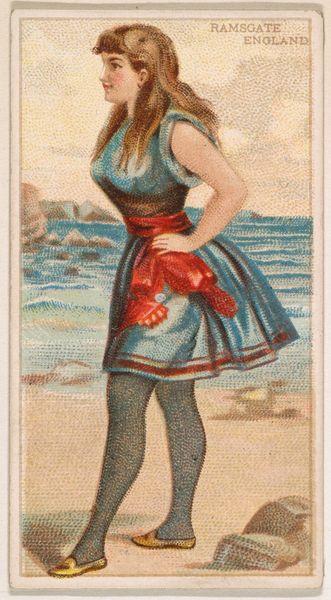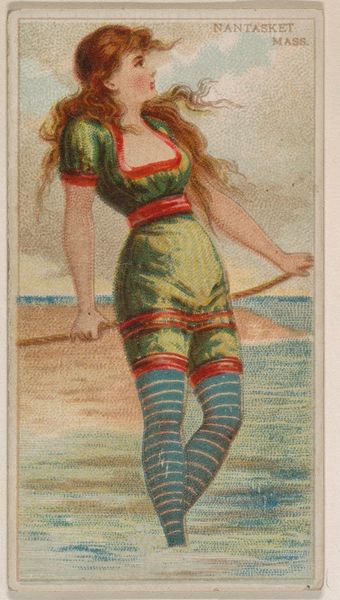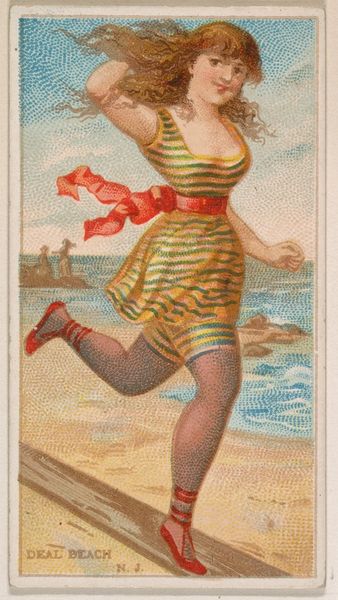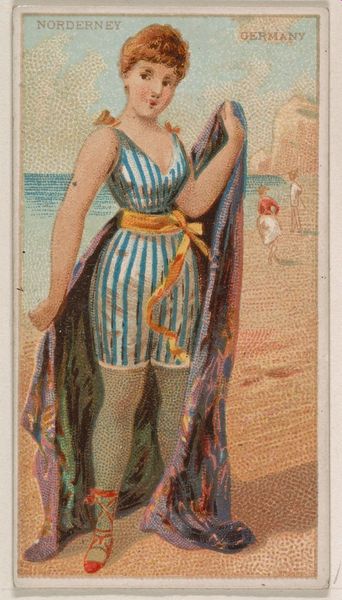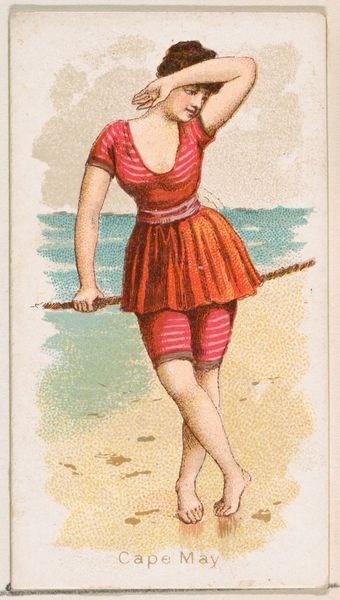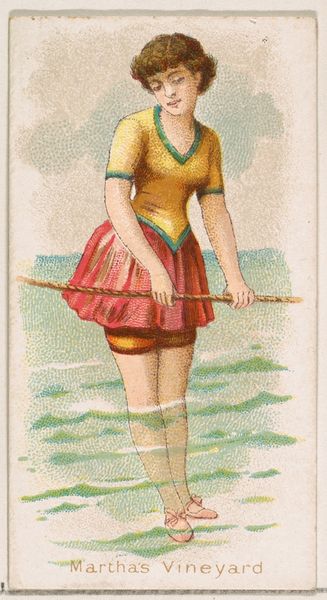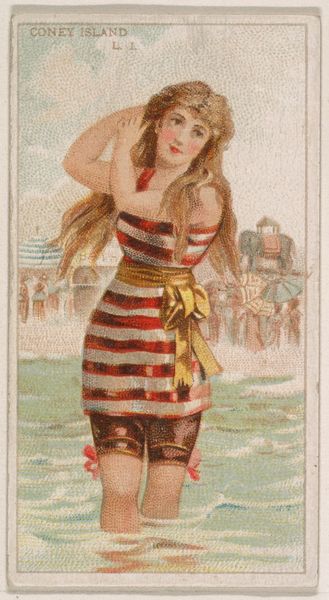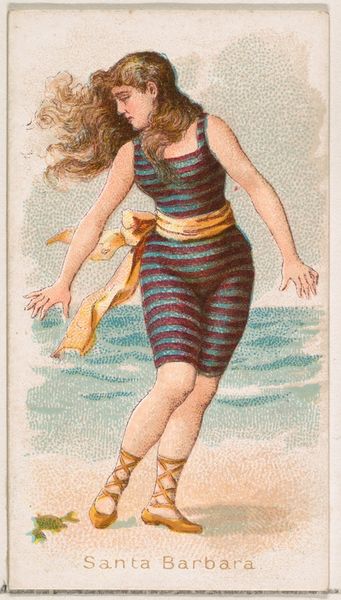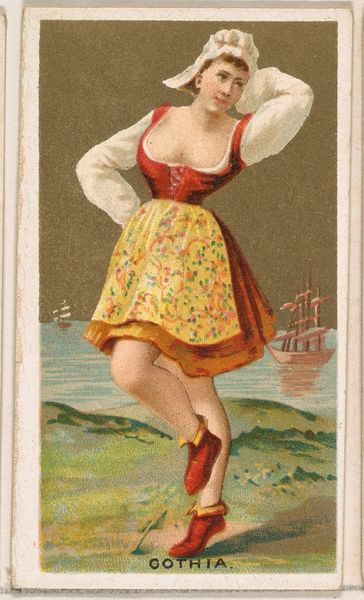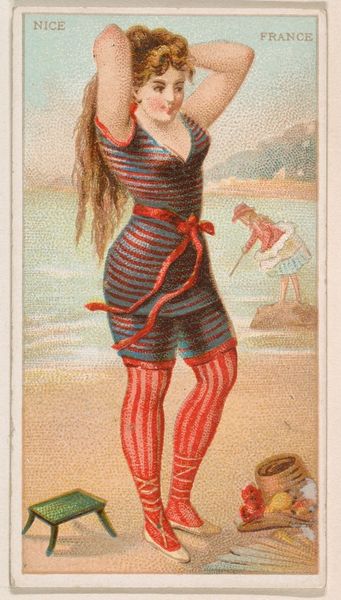
Brighton, England, from the Surf Beauties series (N232), issued by Kinney Bros. 1889
0:00
0:00
Dimensions: Sheet: 2 3/4 × 1 1/2 in. (7 × 3.8 cm)
Copyright: Public Domain
Curator: I’m struck immediately by the anachronism. The layering of textures—sand, sea, a figure in revealing Edwardian dress. There's a visual narrative at play, surely? Editor: Indeed. We're looking at a card titled "Brighton, England, from the Surf Beauties series," issued around 1889 by the Kinney Brothers Tobacco Company. It’s a piece that combines photography and drawing with elements of printmaking, including etching and color work. The image evokes Ukiyo-e sensibilities as well. Curator: Fascinating. That aesthetic tension immediately highlights Victorian anxieties about women and public space. Is this the dawn of seaside leisure or further commodification of the female form? This seemingly innocent pose hides a power struggle. She owns the beach but also submits to the male gaze implicit in tobacco advertising. Editor: Exactly. Consider also the evolution of Brighton itself, becoming a seaside resort famed for its supposed health benefits even as it was entangled in narratives of empire and colonialism. The very act of leisure here signifies something more insidious – a tension in class dynamics at the time. Curator: And there is a peculiar sense of theater. Her hand gestures almost seem as though she is pulling back the curtains of her long hair. What do those theatrical symbols point toward, I wonder? A stage for female performance and objectification perhaps? Is it the performance of idealized beauty in public? The woman almost feels symbolic, standing in for England as a whole, caught between tradition and transformation, between repression and a new type of freedom. Editor: The color palette too, strikes a curious balance. Soft oranges and blues, mimicking the tones of both sunset and new dawn; that tension surely represents societal shifts reflected in feminine ideals, no? It reminds me how often such commercial images served to shape desires but also mirrored underlying anxieties of the era. Curator: Ultimately, these subtle shifts in visual iconography allow for more than one interpretation – an almost hopeful moment, or one mired in cooption. Both exist within the same frame, highlighting the challenges to female identity which persist even today. Editor: Agreed, it seems like that duality is exactly the symbol being created for her through its distribution; she becomes representative of something shifting and uncontainable. An intriguing image.
Comments
No comments
Be the first to comment and join the conversation on the ultimate creative platform.
